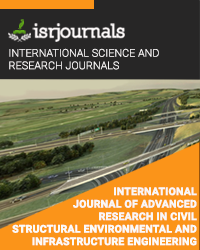constructability of concrete formwork systems
C.B.Surendranath, P.Tharun Kumar
Published in International Journal of Advanced Research in Civil,Structural,Environmental and Infrastructure Engineering and Developing
ISSN: 2320-723X Impact Factor:1.7 Volume:3 Issue:1 Year: 03 March,2017 Pages:306-311

Abstract
Vertical development is the ideal solution to meet the demand of land for the fast growing urban population in India. It is the construction of tall structures such as high-rise buildings, sky scrapers and sky towers etc., rather than constructing laterally to accommodate large population in quiet a lesser area.. A valid comparison of different climbing formwork with the conventional formwork is done for the lift core-wall in the 20 storey high-rise building model using Building Information Modeling (BIM). From the developed 3D BIM model, the cost, time, quality, safety and sustainability factors of both conventional and climbing formwork are explored in detail by quantitative and qualitative indices
Kewords
Building Information Modeling, climbing formwork, constructability, high- rise building,vertical development
Reference
1. Aknoukh A. (2011), „BIM and Concrete Formwork Repository‟, 47th ASCE International Conference Proceedings, Vol. 1, pp. 24-33. 2. Hardin Brad. (2010), „BIM and Construction Management‟, Willy Publishing, Inc., New York, pp. 89-139. 3. Hurd M.K. (2005), „Formwork for concrete‟, Special Publication No.4, American Concrete Institute, Michigan, U.S.A. 4. O‟Connor J. and Miller S.J. (1994), “Constructability Programs: Method for assessment and Benchmarking”, Journal of Performance of Constructed Facilities, ASCE, Vol. 8, No. 1, pp. 12-19. 5. O‟Connor J. and Miller S.J. (1995), “Overcoming barriers to successful constructability implementation efforts”, Journal of Performance of Constructed Facilities, ASCE, Vol. 9, No. 2, pp. 67-72. 6. Russell J. and Swiggum K.E. (1994), “Constructability Related to TQM, Value Engineering, and Cost/Benefits”, Journal of Performance of Constructed Facilities, ASCE, Vol. 8, No. 1, pp. 31–45. 7. Jergeas G. (2001) “Benefits of constructability on construction projects”, Journal of Construction Engineering and Management, ASCE, Vol. 127, No. 4. pp. 44-49. 8. Leung, A. and Tam C.M. (1991), “Scheduling for High-Rise Building Construction using Simulation Techniques”, Journal of Construction Informatics, Vol. 44, pp. 21-26. 9. McGeorge D. (2002), “Construction Management: New Directions”, Willy Publishing, Inc., New York, U.S.A, pp. 54-89. 10. Lam P. and Chan A. (2006) “Contribution of designers to improving buildability and constructability‟, Elsevier, Design Studies 27, No.4. 11. Ruby D. (2005) “Constructability of Structural Steel Buildings”, Design Guide, American Institute of Steel Construction (AISC), Vol. 22, pp. 22-26. Touran A. (1986), “Concrete formwork: Constructability & difficulties”, Journal of Civil Engineering Practice, Vol. 3, No. 2, pp. 21-24.

